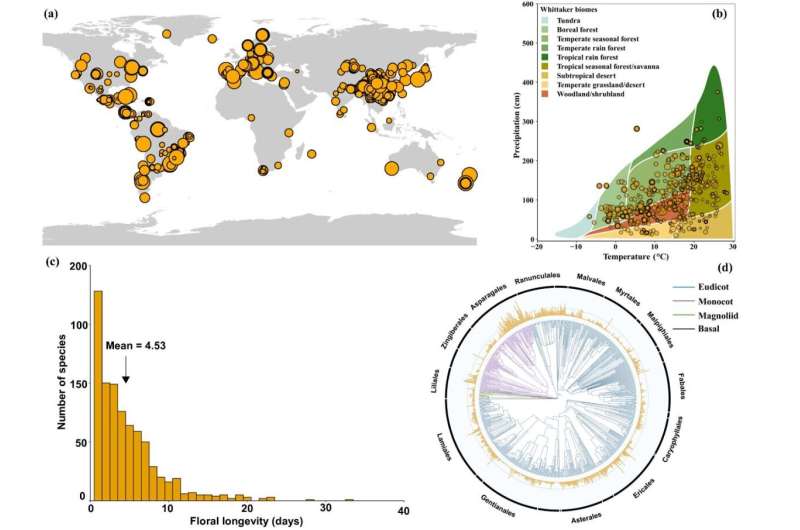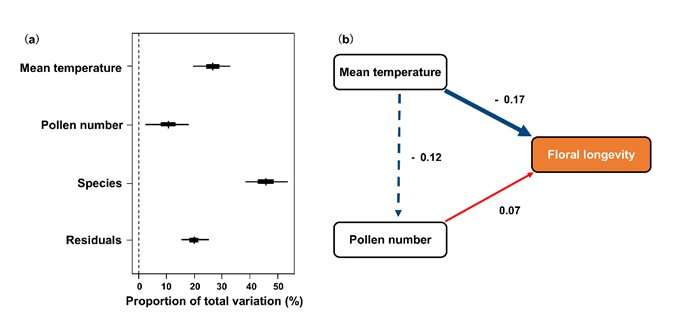Global biogeographical patterns and correlates of floral longevity

The length of time a flower remains open (i.e., from anthesis to flower senescence) is called floral longevity. Floral longevity is one of the most important reproductive traits, as it determines opportunities for pollen dispersal and capture of pollen by stigmas as well as the potential to influence intra pollinator foraging and opportunities for geitonogamous self-pollination.
Floral longevity exhibits substantial variation, spanning from several hours to tens of days, even among species within the same family, genus, or same species at different sites. Since Kerner von Marilaun first observed this issue in 1895, floral longevity has attracted much attention from evolutionary biologists. However, there is still remarkably little information about large-scale geographical patterns in floral longevity and its corelates.
Using published floral longevity data from 818 angiosperm species in 134 families and 472 locations worldwide, a research team from the Kunming Institute of Botany of the Chinese Academy of Sciences (KIB/CAS) has quantified the latitudinal patterns of floral longevity and the relationships between floral longevity and a range of biotic and abiotic factors.
According to the researchers, among all angiosperms investigated, floral longevity averaged at 4.5 days, ranging from two hours (Heteracia szovitsii, Asteraceae) to 33 days (Telipogon peruvianus, Orchidaceae), with a 400-fold variation.

Floral longevity exhibited a significant phylogenetic signal, indicating that related species tended to have similar durations of anthesis. There was a strong latitudinal gradient in floral longevity and such latitudinal trend still existed after accounting for elevation. Mean floral longevity increased from about two days at the equator to about 4.9 days at 50° N (north latitude) and about 3.9 days at 50° S (south latitude).
In contrast to traditional view, flowers of self-incompatible species, herbaceous species, invertebrate-pollinated species and species with large flowers did not have longer life-spans than those of self-compatible species, woody species, vertebrate-pollinated species and species with small flowers. For male and female fitness components, floral longevity was positively correlated with pollen number per flower and negatively correlated with pollination success index.
In regions where plants experience environmental conditions such as high temperature, high solar radiation and low water availability, floral longevity was significantly shorter. However, when both biotic and abiotic variables were considered simultaneously, only the mean temperature of the flowering season and the pollen number per flower had significant effects on floral longevity.
These results suggest that physiological processes associated with floral maintenance play a key role in explaining latitudinal variation in floral longevity across global ecosystems, with potential implications for floral longevity under global climate change and species distributions.
This study was published in New Phytologist, titled "Global analysis of floral longevity reveals latitudinal gradients and biotic and abiotic correlates."
More information: Bo Song et al, Global analysis of floral longevity reveals latitudinal gradients and biotic and abiotic correlates, New Phytologist (2022).
Journal information: New Phytologist
Provided by Chinese Academy of Sciences


















